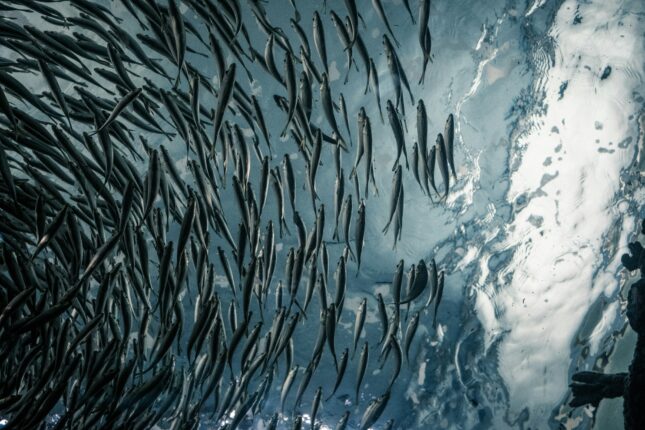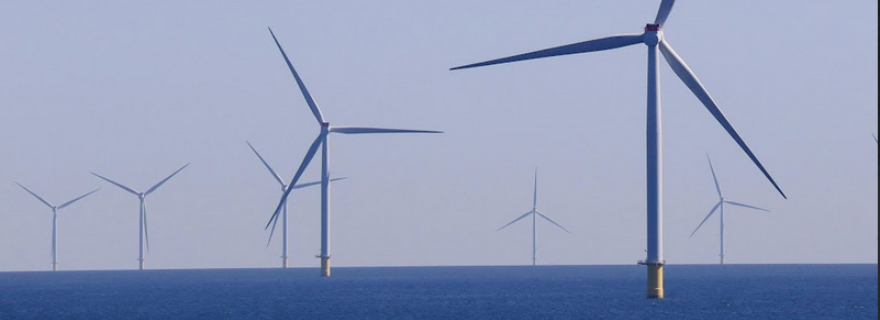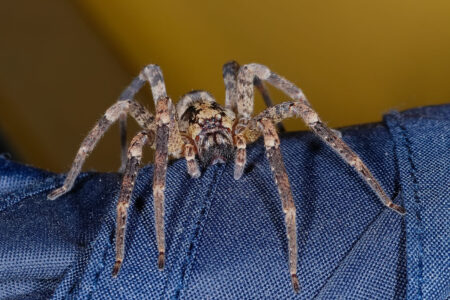Enhancing green energy through music: how is this possible?
In addition to the benefits of green energy, wind turbines frequently cause problems. Not only do humans suffer the consequences of this, but so does marine life. Presently, researchers are developing solutions that promote eco-friendly practices for these animals.
Although wind turbines generate electricity in an environmentally friendly way, the construction of wind turbines often sparks complaints from many individuals. According to them, they are ugly and cause noise pollution. Furthermore, wind turbines also have a less than stellar reputation at sea. For fish, the construction of wind farms creates all kinds of problems. However, the question remains: “How can we solve these problems ?”
Drawbacks of green energy
The construction of offshore wind farms causes a lot of noise. Even before construction can begin, loud bangs are used to find a suitable site. This so-called seismic survey creates both very high and very low sound frequencies, making it audible in the surrounding areas. Once a suitable spot is then found, large piles are driven into the seabed, a process known as piling. Pile driving generates primarily lower frequencies, but the sound has high intensity. Consequently, it can be heard as far as 70 km away.
According to ecologist and behavioral biologist Fien Demuynck of Leiden University, “hearing is crucial for many marine animals, such as fish, especially in the murky waters of the North Sea, aiding in navigation and communication”, she explains. For instance, toothed whales emit high-frequency sounds to locate their prey, while certain fish species communicate through sound. Therefore, it is essential for these animals to maintain their ability to hear each other. However, “artificial sounds, such as those produced during seismic surveys, can mask these natural sounds”.
Not only is it more challenging for marine animals to communicate, but they also endure physical harm. The high-pressure sound produced during pile driving can result in cracks in the organs of fish, sometimes leading to their death. Additionally, the sound alters the animals' behavior. For example, seismic noise prompts cod to eat less and schools of fish exhibit unnatural behavior. Thus, the construction of wind farms causes many problems in the marine environment.
Noise at sea
Marine animals are significantly impacted by the noise generated at sea. According to Demuynck, it is therefore important to reduce the nuisance of this noise. One method is to reduce the noise from pile-driving by installing bubble screens around the construction sites. These bubbles slow down and dampen vibrations since sound travels less effectively in air than in water, resulting in a significant reduction in noise.
Another approach to prevent noise damage to marine animals is to temporarily chase them away from the pile-driving sites using acoustic deterrent devices, or ADDs in short. These devices emit sound pulses to discourage marine life from approaching. However, the effectiveness of these pulses varies among species, which is the reason for a lot of the ongoing research on this topic.
Jaws
Researchers at Leiden University are currently investigating the effects of wind farms on fish in the North Sea and determining the most effective sounds for deterring them. For instance, they tested how herring react to successive sounds that increase in volume and tempo, such as that of the iconic soundtrack from the Jaws movie. In both a controlled environment and at sea, the study examined whether herring behaved differently in response to varying sound stimuli.
The findings? “Among all the variations we tested, we observed no discernible difference”, says Demuynck. The fish showed no reaction to the sounds emitted by the ADDs and continued to swim near the piling spots. That is why further research is necessary to find out how best to protect the fish from the noise generated by seismic surveys and pile driving.

New life
Although wind farm construction causes many problems, it also has its benefits. Once established, fishing activities are no longer allowed in that area, offering a calm environment for the fish, but also for their predators. Seals, for example, are drawn to wind turbines in search of prey. Moreover, the piles supporting the turbines serve as artificial reefs, fostering the growth of marine life and attracting diverse species.
ALl in all, there are both benefits and drawbacks to the construction of wind farms. While noise from construction causes harm and behavioral changes, marine ecosystems have the potential to thrive there post-construction. To minimize damage, we can use certain sounds to temporarily scare marine animals away. This does not yet work for all animals, which is a point that needs subsequent research to be performed to identify optimal sounds to scare away fish as well as other marine species. In any case, it appears that fish do not seem to be particularly impressed by the ominous soundtrack of Jaws.
Sources
- APELAFICO: Acoustic Ecology of PELAgic FISH COmmunities: A study into the effects of construction and operation of wind farms. (z.d.). Leiden University. Geraadpleegd op 22 januari 2024, van https://www.universiteitleiden...
- Debusschere, E., De Coensel, B., & Haelters, J. (2017). Hoe lawaaierig is de oceaan. De Grote Rede: Nieuws over onze Kust en Zee, 46, 14–18. Geraadpleegd op 22 januari 2024, van https://biblio.ugent.be/public...
- Demuynck, F. (2024). Bionieuws Symposium, Leiden, Nederland
- Kok, A. C. M., Bruil, L., Bergès, B., Sakınan, S., Debusschere, E., Reubens, J., De Haan, D., Norro, A., & Slabbekoorn, H. (2021). An echosounder view on the potential effects of impulsive noise pollution on pelagic fish around windfarms in the North Sea. Environmental Pollution, 290, 118063. Geraadpleegd op 22 januari 2024, van https://doi.org/10.1016/j.envp...






0 Comments
Add a comment